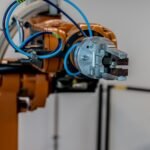
Researchers found a single rule for how animals make decisions about where to move while they’re moving.
Virtual reality has been used by a group of researchers from the University of Konstanz and the Max Planck Institute for Animal Behavior in Germany to figure out how animals choose where to go when there are many options. The study is the first to show that there is a common algorithm that animals use to make decisions. It also suggests that basic geometric principles can help us understand how and why animals move the way they do. Most animals have to decide where they want to go in their lives. Breakthroughs in neurobiology over the last few decades, including those that won the 2014 Nobel Prize in Medicine, have helped piece together a picture of how animals think about options that are spread out across a space.
Now, a group of scientists from around the world has used their knowledge of how animals use their brains to figure out how they make decisions when there are a lot of options. When animals move around, their neural representations of different options change. Vivek Hari Sridhar, the first author on the study and a postdoc at the Max Planck Institute for Animal Behavior in Konstanz, says this: We show that if we think about spatial decision-making in this way, we can see new and important geometric principles that had been missed until now. People from Germany, Israel, and Hungary worked together on the study. It was done by biologists, engineers, and physicists from these three places.
A computational model of decision-making
Neurobiology, physics, and animal behavior were used to make a computational model of how the brain makes decisions. As a PhD student at both the University of Konstanz and the Max Planck Institute for Animal Behavior, Sridhar worked on his project. He says that taking into account movement and neural dynamics was important. It gave us a new view of how the brain makes decisions. This caused animals to abruptly change their direction, each time with the removal of one of the other options they had.
This technology allowed the scientists to put the animals in open, photorealistic, environments while also getting very accurate measurements of the animals’ movements while they were making decisions. This allowed them to do both. It’s great that these findings show that this response is very good at making decisions in a wide range of complex and different ecological situations. Scientists also found that animal groups, like moving herds or flocks, may use the same geometric principles to make decisions about where to go.



